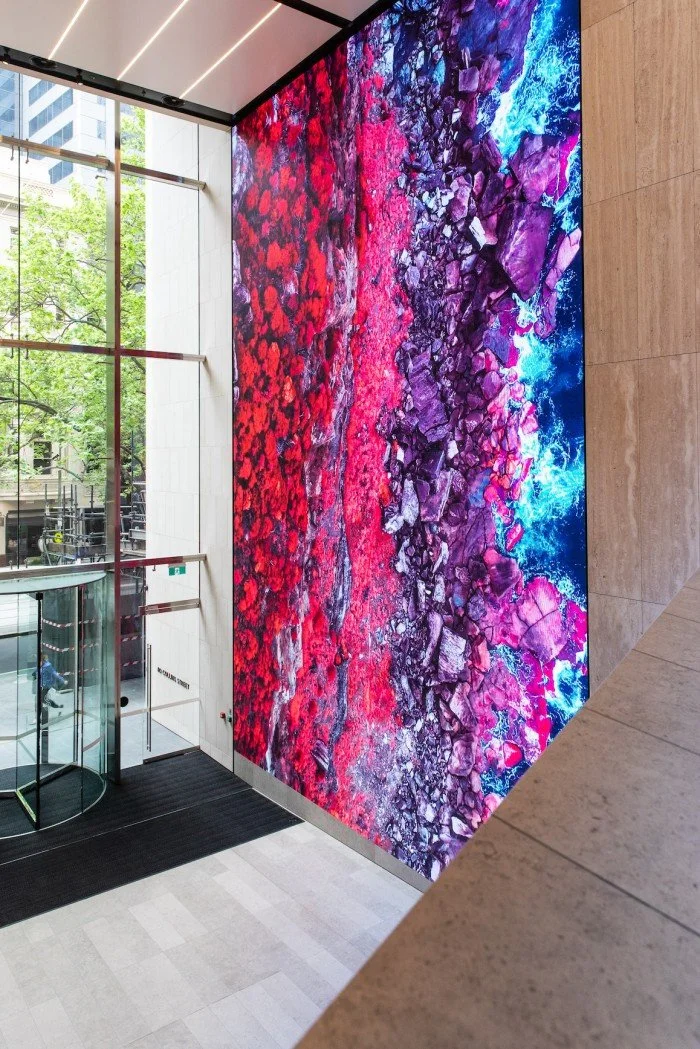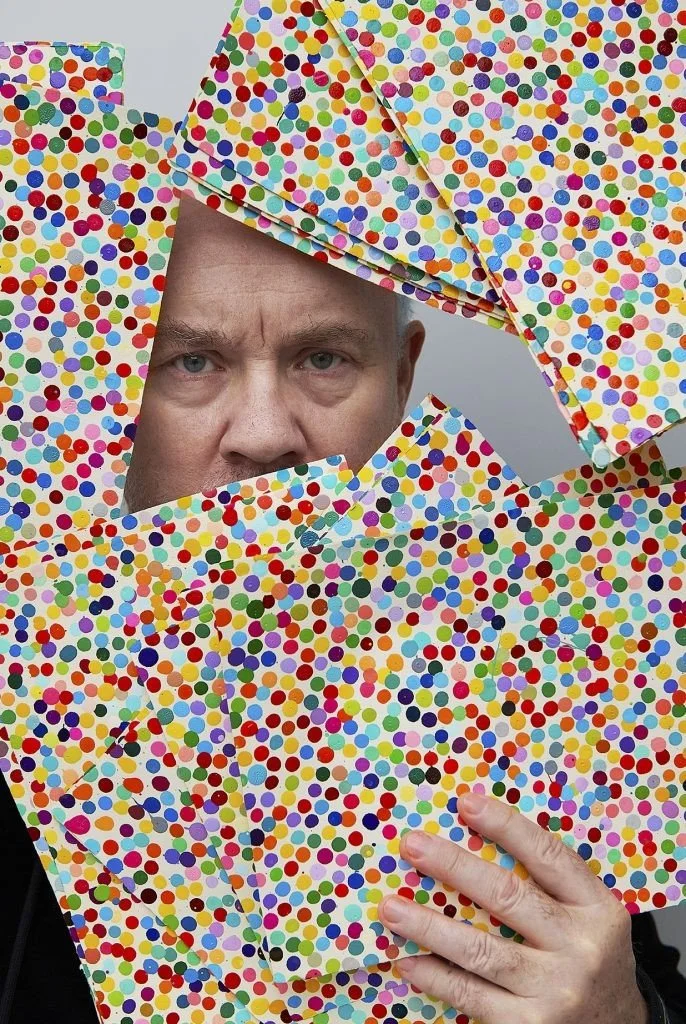Why we need to start talking about NFTs
More connected, more digital, and more decentralised -NFTs are building a bigger arts community, helping artists grow and changing the way we buy and sell art. So what is the response of the art world?
A few weeks ago, our sister company Art Pharmacy started the conversation about digital art and NFTs. They touched on the growing interest, intrigue and desire to procure digital art which they’ve seen amongst their network of art collectors, corporate clients as well as artists they work with. They have been overwhelmed by the positive response to digital art project outcomes and delighted to see more and more clients inquiring after ‘the digital’.
These works speak to the new technological world we live in, where digital is not only modern, efficient and solution focused, it's also part of the way we connect with others, space and memories.
The appeal of digital art carries beyond its initial aesthetic captivation; it is a whole new way for people to engage with art within a manner that is accessible to everybody. It is no wonder our clients see it as a solution to employee satisfaction, client attraction and strategic placemaking - digital art, like our digital world, is connecting us more than ever. This is why the growth of NFT artwork sales, procurement and investment comes as no surprise and is in no way slowing down.
NFTs, Blockchain and Cryptocurrency: A Decentralised Approach
‘NFT’s’ are a bit of a buzz word at the moment and have been emerging into our cultural landscape over the past few years. NFT’s or Non- fungible tokens is simply something that is characteristically unique and non replaceable; this can be art, a tweet or a snippet of Le Bron’s winning slam dunk. The point is its something distinctive and unrepeatable, unlike a fungible token, or currency, that doesn’t hold this same value. This cryptocurrency, which is where the sales of NFTs occur, is enabled by blockchain technology - a specific database that stores in blocks that are chained together (hence blockchain).
Babekuhul digital artwork at 80 Collins St, Melbourne. Photo by Hilary Walker.
Damien Hirst with his NFT works from ‘The Currency’. Courtesy of the artist.
So say you buy an NFT artwork via the blockchain, this new information becomes a ‘block’ that is stored in the database. When you then sell the artwork this transaction is created into a new block that is connected chronologically by a chain. This means that all transactions made via the blockchain are linked, recorded, irreversible and transparent.
The goal of blockchain is to have a way information can be recorded and distributed, but not edited. Crypto-currencies such as the well known, Bitcoin, requires a collection of computers to store its blockchain, as this allows the storing of all the transactions ever made on bitcoin. When you think about it, this completely reforms the way transactions occur; away from the banks monetary records that hold control over currency and into a decentralised approach where all users collectively retain control.
But what does this mean for the art world?
Outside the gallery and into the global world: Art goes digital
Well alongside the rise of digital art we are also seeing a push away from the typical, centralised and ‘white cube’ art gallery model. Within our globalised environment, art, images and videos from all over the world are more accessible than ever. Online galleries are growing as physical exhibitions close their doors in light of the COVID-19 crisis, and we are all experiencing art in a new way. Systems of art sales, untouchable gallery displays and the privileges within the art sector, are breaking down, as anybody can now grow, market and sell their art to a global audience via the internet and social networks.
In parallel to the way the world is moving digital and becoming more connected, decentralised and community focused, so too is the arts world. NFTs art sales play a huge role in this.
Breaking the bubble. Environmental concerns of NFTs and challenges in the marketplace
But despite their potential to reform the art world NFTs are also facing high amounts of criticism for their environmental impact. A recent study by the Cambridge Bitcoin Electricity Consumption Index found that the amount of electricity that mining Bitcoin consumes in one year is equal to that used to power Malaysia, Sweden or Ukraine. For artists, there comes a huge carbon footprint from the processes of minting, bidding, canceling, sales and transfer of ownership of NFTs.
However this has not gone unnoticed and there are huge efforts to shift the energy outputs of the blockchain. For example, artist Damien Hurst launched a collection of NFTs on the Palm sidechain, which is 99% more energy-efficient than other currencies such as Ethereum and Bitcoin. Other artists are also really passionate about making NFTs more sustainable and pushing for carbon offsets and carbon negative platforms to sell their art.
These carbon neutral currencies are increasingly growing traction, credibility and the preferred place for artists to sell their works.
But it's more than the questionable environmental footprint that is stopping artists and buyers moving into the space - it's also the confusion, clutter and lack of understanding about how the blockchain works that deters people from the NFT art world. The clustering of artworks makes the NFT marketplace a bit of a wormhole while the scepticism of the legitimacy of blockchain currency investment is turning off buyers. For artists trying to enter the space they are met with an array of challenges including: finding the blockchain and cryptocurrency hard to navigate, not knowing which platform to mint their artworks on, needing to find new markets to sell their art to and facing some substantial upfront costs.
Yet for some artists it's been a huge success and allowed them to fully invest in their practice, away from the traditional gallery setting.
The beauty of the blockchain means that every time their artwork is sold, they get a cut of the sale. Long term, this financially offers greater stability for artists, while also appealing to the growing trends we are seeing within the digital art space.
But who is helping artists and buyers navigate this new marketplace? Certainly not our galleries in Australia. When questioned about the NFT world (according to the Guardian) the Sydney division of the auction house, Bonhams said it “has so little to do with NFTs that its spokesperson felt ill-equipped to comment'' while Paddington's gallery Maunsell Wickes "had never even heard of them”.
Looking forward: Why we need to start talking about NFTs in the art world
We need a leader in the marketplace creating an easy to navigate system that allows for environmentally sustainable NFT art sales in a carefully curated way. Without this Australian artists who wish to move into the digital world in an ethical manner, will struggle and consequently miss out on global market opportunities and risk becoming lost in our new digital world.
We believe the Australian art world needs to step up into this space and help our creative community thrive and grow after the impacts of the pandemic leaving 53% of businesses in the arts and culture sector out of operation (Australian Centre for Future Work).




